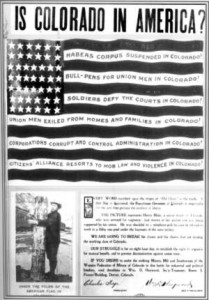Sidebar by Ed Quillen
County names – August 2003 – Colorado Central Magazine
The origins of many county names in Central Colorado are fairly obvious. Park County, for instance, is named for South Park, just as Lake County is named for Twin Lakes.
Those two were among the original 17 counties designated by the Territorial Assembly in 1861, as was Frémont County, which gets its name from John Charles Frémont, leader of four expeditions into the West in the 1840s and the first Republican candidate for the presidency of the United States in 1856.
Custer County is of course named for Gen. George Armstrong Custer, who was killed, along with his entire immediate command, in a battle with the Lakota and allied tribes on June 26, 1876. The county was formed in 1877 from the south end of Frémont County, and it was the result of a silver rush. Claims had to be recorded at the county seat, and in those horse-and-buggy days, the closer the county seat, the better.
Saguache County is older, dating to 1866 and the political power of Otto Mears, who made Saguache his headquarters before moving to the San Juans in the 1880s. According to the Southern Ute Tribal Dictionary, it means “green place,” although other interpretations are possible — the Nuche used the same term for both blue and green.
Gunnison County is named for the river, which was named for Capt. John W. Gunnison, who led a military exploration of a possible transcontinental railroad route across southern Colorado in 1853. He and several other members of the party were killed by Indians in Utah, which explains why that state also has a town named Gunnison.
Many Colorado counties, like Chaffee, are named for politicians whose names have otherwise faded from common knowledge. For instance, James W. Denver was the governor of Kansas Territory in 1859; Lucius L. Weld was the first territorial secretary of Colorado in 1861; and Frederick Pitkin was governor of Colorado in 1881.
Chaffee County was formed in 1879 from the southern part of Lake County; at the same time, the north part became Carbonate County. This was probably done to avoid the often violent battles over which town would get the county seat. Granite had been the seat of Lake County, but by creating a new Carbonate County, the legislature could just designate its seat as Leadville.
But then the names were shuffled.
Initially, the north part was Carbonate County, and the south part was Lake, but shortly thereafter — probably due to the realization that the namesake Twin Lakes were no longer in Lake County — the legislature made the north part Lake and the south part Chaffee. Leadville, however, remained the seat of the new Lake County.
As for Jerome B. Chaffee, he was a major player in Colorado politics in 1879, so it’s easy to understand why his name came up


